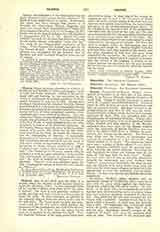

Chanca, DIEGO ALVAREZ, physician-in-ordinary to Ferdinand and Isabella of Castile and Aragon; dates of birth and death uncertain. Owing to his professional skill and learning, he was appointed by the Crown to accompany the second expedition of Christopher Columbus to America in 1493. Shortly after landing on the shores of the Island of Haiti, Dr. Chanca proved his skill as a physician by successfully treating Columbus for an attack of pernicious malarial fever, and saving the lives of other prominent members of the expedition who were attacked by disease. On a site selected by Chanca, whose professional advice had been sought, was established the first Christian settlement in the New World, to which Columbus gave the name of Isabella in honor of his illustrious patroness. In this locality Chanca wrote his letter to the municipal council of his native city, which was the first document describing the flora, the fauna, the ethnology, and the ethnography of America. A remarkable circumstance in connection with this letter is the fact that everything therein contained was the result of only three months of observation and study. Upon his return to Spain, Chanca published in 1506 a medical treatise entitled “Para curar el mal de Costado” (The Treatment of Pleurisy), and in 1514, he published a work in Latin criticizing a book entitled “De conservandra juventute et retardanda senectute”, the work of Arnaldo de Villanova, a brother-physician. Chanca’s work was published under the title “Commentum novum in Parabolas divi Arnaldi de Villanova”.
VENTURA FUENTES

